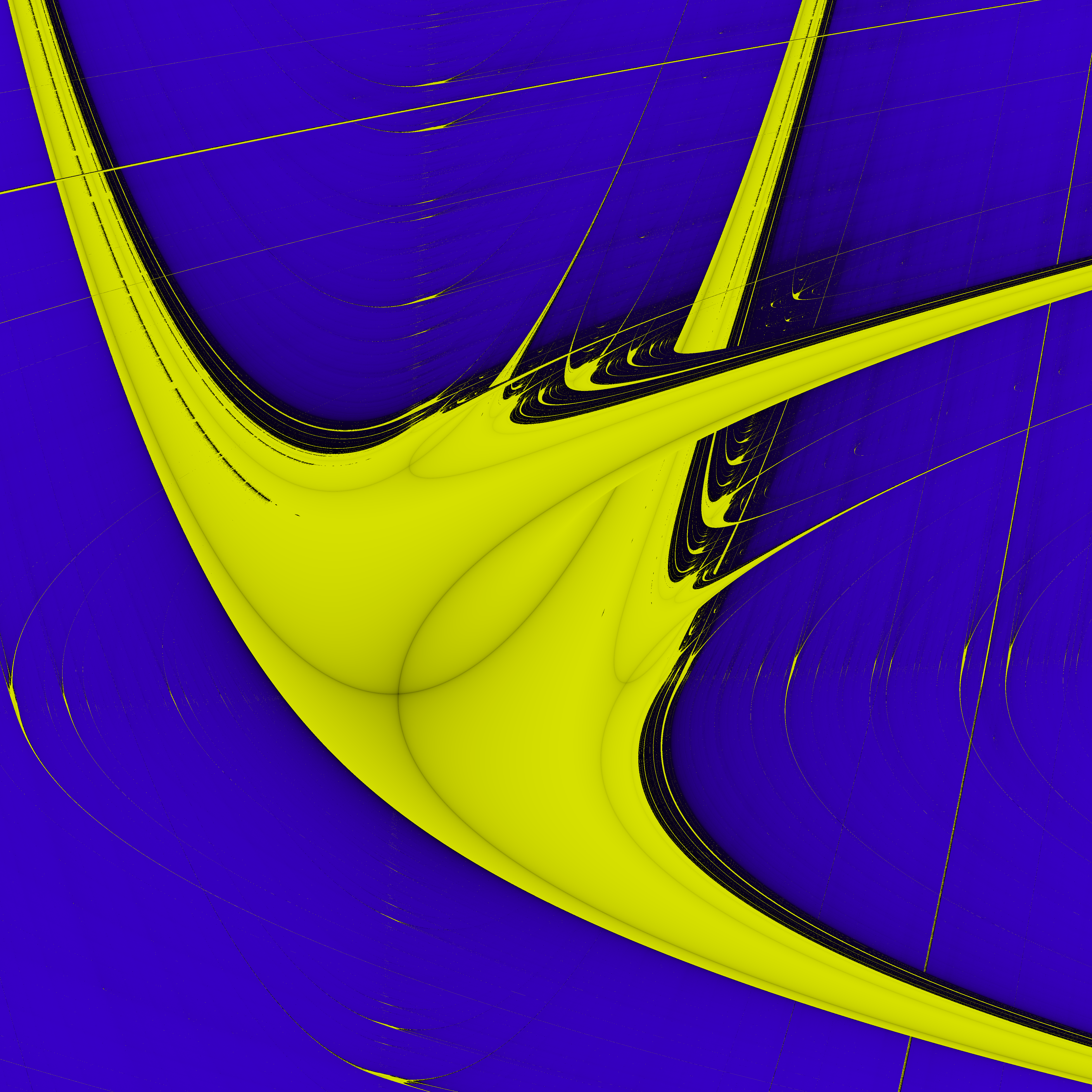Lyapunov fractal on:
[Wikipedia]
[Google]
[Amazon]
 In
In
 In
In mathematics
Mathematics is an area of knowledge that includes the topics of numbers, formulas and related structures, shapes and the spaces in which they are contained, and quantities and their changes. These topics are represented in modern mathematics ...
, Lyapunov fractals (also known as Markus–Lyapunov fractals) are bifurcational fractal
In mathematics, a fractal is a geometric shape containing detailed structure at arbitrarily small scales, usually having a fractal dimension strictly exceeding the topological dimension. Many fractals appear similar at various scales, as illu ...
s derived from an extension of the logistic map
The logistic map is a polynomial mapping (equivalently, recurrence relation) of degree 2, often referred to as an archetypal example of how complex, chaotic behaviour can arise from very simple non-linear dynamical equations. The map was popular ...
in which the degree of the growth of the population, ''r'', periodically switches between two values ''A'' and ''B''.
A Lyapunov Lyapunov (, in old-Russian often written Лепунов) is a Russian surname that is sometimes also romanized as Ljapunov, Liapunov or Ljapunow. Notable people with the surname include:
* Alexey Lyapunov (1911–1973), Russian mathematician
* Alek ...
fractal is constructed by mapping the regions of stability and chaotic behaviour (measured using the Lyapunov exponent
In mathematics, the Lyapunov exponent or Lyapunov characteristic exponent of a dynamical system is a quantity that characterizes the rate of separation of infinitesimally close trajectories. Quantitatively, two trajectories in phase space with ini ...
) in the ''a''−''b'' plane for given periodic sequences of ''a'' and ''b''. In the images, yellow corresponds to (stability), and blue corresponds to (chaos).
Lyapunov fractals were discovered in the late 1980s by the Germano-Chilean physicist from the Max Planck Institute of Molecular Physiology
The Max Planck Institute of Molecular Physiology (german: Max-Planck-Institut für molekulare Physiologie) is located in Dortmund, next to the Dortmund University of Technology. It is one of 80 institutes in the Max Planck Society (Max Planck Ges ...
. They were introduced to a large public by a science popularization article on recreational mathematics published in Scientific American in 1991.
Properties
Lyapunov fractals are generally drawn for values of ''A'' and ''B'' in the interval